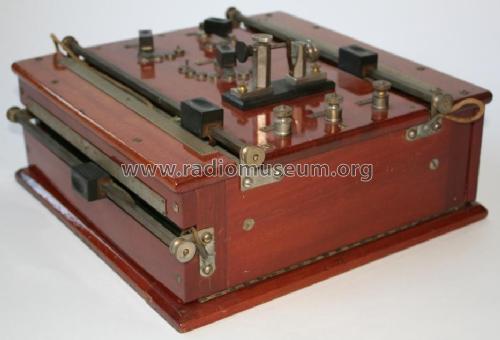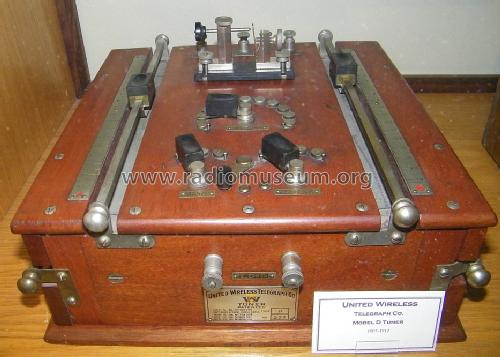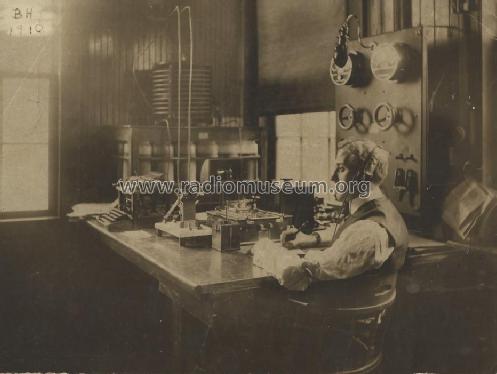- Pays
- Etats-Unis
- Fabricant / Marque
- United Wireless Telegraph Co.; New York City, New York
- Année
- 1907–1912 ?
- Catégorie
- Poste à détecteur (diode ou cristal, pas de lampes)
- Radiomuseum.org ID
- 258000
- Principe général
- Détecteur à galène ou semi-conducteur
- Gammes d'ondes
- PO et GO
- Tension / type courant
- Pas d'alimentation nécessaire
- Haut-parleur
- - Pour casque ou amplificateur BF
- Matière
- Boitier en bois
- De Radiomuseum.org
- Modèle: Tuner Type D - United Wireless Telegraph Co.;
- Forme
- Modèle de table boitier avec vouvercle
- Remarques
-
This circa 1907 United Wireless crystal radio receiver was most likely designed by early wireless pioneer Harry Shoemaker. Shoemaker was the chief engineer for Lee de Forest’s American Wireless Telegraph Company, and later United Wireless Telegraph Company.
The Type D tuner had a range of 200-2000 meters and was widely used through WWI.
The set has two tuning coils inside a mahogany box that measures approximately 12″ x 12″ by 4.25″ high. On the top surface, it has slots for two sliders for tuning ad switches for battery bias and detector-shorting during transmit periods. The batteries, which had to be replaced every three months, were stored inside. On the right hand slide is a third slide tuner. These sliding tuners are recessed, whereas in the later Model Type D, they are raised above the panel and removable for easier cleaning. This set also has two aerial binding posts for the loop antenna on the outer panels. Later, all three binding posts were on the middle top panel. The center binding post was the ground connection.
- Auteur
- Modèle crée par Alan Larsen. Voir les propositions de modification pour les contributeurs supplémentaires.
- D'autres Modèles
-
Vous pourrez trouver sous ce lien 15 modèles d'appareils, 15 avec des images et 0 avec des schémas.
Tous les appareils de United Wireless Telegraph Co.; New York City, New York
Collections
Le modèle Tuner fait partie des collections des membres suivants.
Musées
Le modèle Tuner peut être vu dans les musées suivants.










